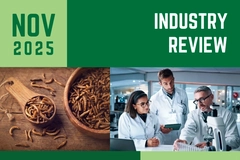
- Industry news
Industry news
- Category news
- Reports
- Key trends
- Multimedia
Multimedia
- Journal
- Events
- Suppliers
Suppliers
- Home
- Industry news
Industry news
- Category news
- Reports
- Key trends
- Multimedia
Multimedia
- Events
- Suppliers
Suppliers
“Vicious cycle of malnutrition:” income inequality driving poor nutrition across India

22 Aug 2022 --- Higher levels of nutritional inequality related to low-income women and children account for 15% of India's disease burden with malnutrition being the leading cause of death for young children.
The findings are published in a study conducted in Chhattisgarh and Tamil Nadu by BMC Nutrition.
Manifesting as stunting and wasting in children, malnutrition accounts for both underweight and obesity among women. Additionally, the study says there is a high level of anemia in reproductive women in India, another indicator of malnutrition.
The spectrum of malnutrition Malnutrition in India is the main death factor for children below five years old.
Malnutrition in India is the main death factor for children below five years old.
The study highlights malnutrition being one of three national emergencies in India and the leading cause of death for children below five years old, as 68.2% of deaths are caused by malnutrition.

In the short term, malnutrition leads to disability, morbidity and mortality. Chronic malnutrition, such as stunting from early childhood, may affect brain structure, causing reduced mental ability, poor learning capacity and school performance, resulting in lower earnings in adulthood, the researchers say.
Another factor is the high level of anemia in reproductive women. As the study notes: “It is well understood that an undernourished mother will inevitably give birth to an undernourished child, perpetuating an intergenerational cycle of malnutrition.”
On the contrary, obese expecting women are more likely to develop pregnancy diabetes and pre-eclampsia – high blood pressure 20 weeks into pregnancy, affecting the mother and the baby. A previous study highlighted by the researchers found the odds of childhood obesity to be 264% higher if the mother is obese before giving birth.
The link between income and nutrition
A baby with a low birth weight has a high chance of suffering stunting as a child. When an adult, and if female, gives birth, the baby will also suffer low weight. This is what the researchers describe as the intergenerational cycle.
Additionally, the “vicious cycle of malnutrition” affects the uterus or the infant, as adverse health effects, physical and mental, come from not being adequately cared for with nutritious food at an early life stage.
The scientists elaborate that girls are the most disadvantaged societal group, as having poor weight gain during pregnancy results in inappropriate food and health care resulting from poverty.
Previous research has also shown a link between income and nutritional intake among children. The experiment provided low-income families with nutritious foods, which increased the children’s nutritional consumption.
Economic crisis driver for malnutrition Economic challenges worsen malnutrition especially for women and children.
Economic challenges worsen malnutrition especially for women and children.
A recent study revealed the effects of the Ukraine war on malnutrition and food insecurity among women and children, as the two societal groups are vulnerable to malnutrition in terms of high need for body size, pregnancy and lactating.
UNICEF previously stressed that women and children are those affected the most by the current macroeconomic challenges.
“The combined burden of poverty, the pandemic, and the economic crisis is causing severe challenges and deepening existing vulnerabilities including food insecurity and malnutrition with nearly 2.3 million children needing urgent assistance,” Emma Brigham, representative at UNICEF Sri Lanka previously told NutritionInsight.
Additional recent research showed linkage with health and climate change, and heat exposure serves as an accelerator for child malnutrition due to adverse economic effects. Thus, linking the three together makes malnutrition a global threat as the International Monetary Fund flags a potential global recession.
“There are several links between heat and poverty, within and across countries, although these are not all causal and are not related to macroeconomic shocks. Low-income countries tend to be located in warmer areas of the world, and within low-income countries, poorer households’ well-being may be more vulnerable to extreme temperatures,” Sylvia Bloom, development economist, previously told NutritionInsight.
By Beatrice Wihlander












